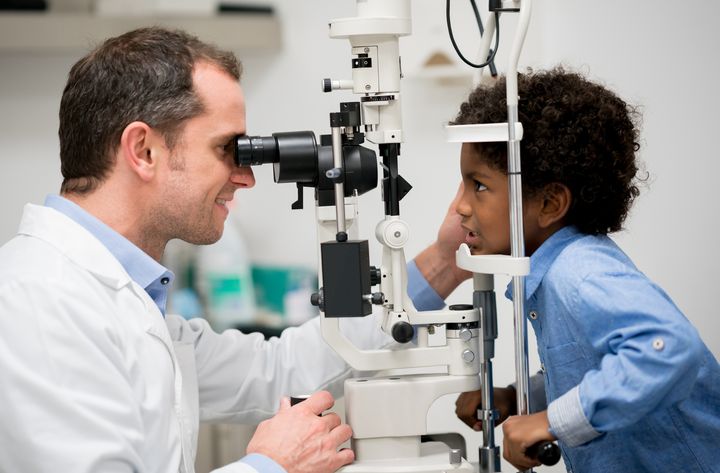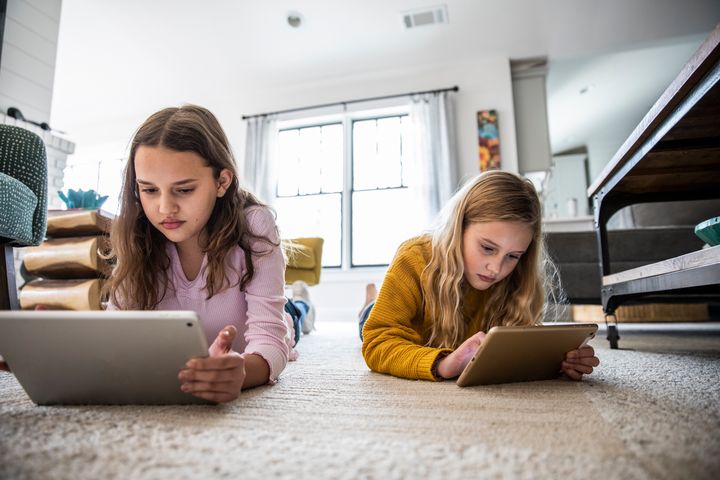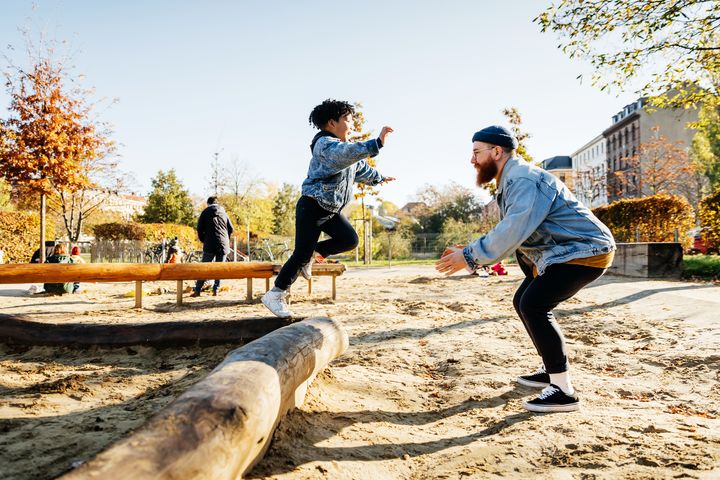[ad_1]
When it comes to myopia, it’s important to get your facts right. How much do you know about this common condition and is your knowledge based on fact or fiction? We’re setting the record straight by busting these five myopia myths.
1. Myth: Myopia isn’t a big deal

Myopia occurs when the eye grows too long, causing blurred vision. If left untreated, myopia can worsen over time. In fact, children with myopia are at a greater risk for eye diseases later in life, including myopic macular degeneration, cataracts, glaucoma, and retinal detachment — and the higher the myopia, the greater the risk. But the good news is there are new treatments that can slow the impact of myopia over time, so it’s important to schedule comprehensive eye exams as part of your child’s annual routine. The sooner you start treatment, the better the treatment’s effect.
2. Myth: Screen time doesn’t affect myopia

We can all remember this ubiquitous reproach from our childhood: Don’t sit too close to the TV. You’ll ruin your eyes! Turns out, there’s some truth behind this parental warning. Screen time has been associated with earlier onset and faster progression of myopia. Excessive “near work,” or looking at something up close for long periods of time, fatigues the eye muscles and can exacerbate myopia. After long periods of near work, which also includes reading a book and completing homework, the eyes are unable to refocus to see distant objects clearly.
3. Myth: Conventional contacts and glasses treat myopia

Conventional contacts and glasses only alleviate the symptoms of myopia by improving distance vision, but they don’t do anything to slow the progression of myopia. Many new treatment options that weren’t available back in the day have been shown to slow myopia’s effects on eyesight, as well as correct vision immediately. Ask your eye doctor to walk you through new treatment options and to create a customized plan that works best for your child.
4. Myth: Outdoor time doesn’t impact eye health

Sight Sanctuaries are spaces for outdoor play that encourage children to take a break from screens and relax after hours spent nose-deep in digital devices and homework. These types of outdoor play do more than getting your children outside — they also benefit eyesight. Studies show that outside play may decrease the risk of new myopia onset by 50%. Join the Global Myopia Awareness Coalition in creating your own Sight Sanctuary this summer with your family.
5. Myth: School vision screenings always detect myopia

Myopia currently affects around one-third of the world’s population. By 2050, that number is predicted to increase to 50%. With the rising prevalence of myopia and related complications, it’s important to act as early as possible to protect your child’s vision. While school vision screenings can be useful, they only provide less than 4% of the information generated during a comprehensive eye exam and miss up to 75% of children with vision problems, according to the American Optometric Association. A comprehensive eye exam with an eye care professional is recommended annually, even if your child was screened at school.
Want to know more about myopia and the new treatment options available? Visit the Myopia Awareness website to learn more.
All facts are via the Global Myopia Awareness Coalition (GMAC), a coalition of leading ophthalmic companies and eye health associations with a mission to increase public awareness about the growing prevalence and consequences of myopia, especially in children.
This article was paid for by Global Myopia Awareness Coalition and created by HuffPost’s Branded Creative Team. HuffPost editorial staff did not participate in the creation of this content.
[ad_2]
Source link

